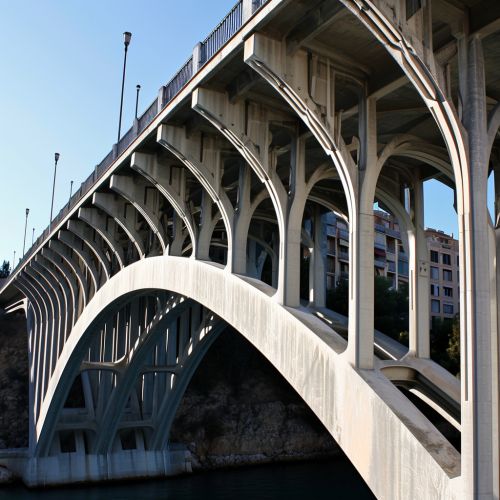Structural Engineering
Introduction
Structural engineering is a sub-discipline of civil engineering in which structural engineers are trained to design the 'bones and muscles' that create the form and shape of man-made structures. Structural engineers also must understand and calculate the stability, strength, rigidity, and earthquake-susceptibility of built structures for buildings and nonbuilding structures. The structural designs are integrated with those of other designers such as architects and building services engineer and often supervise the construction of projects by contractors on site. They can also be involved in the design of machinery, medical equipment, and vehicles where structural integrity affects functioning and safety.


History
The structural engineering discipline started to emerge in the 18th century with the first applications of mathematical methods to building structures, notably the works of Leonhard Euler and Daniel Bernoulli on beam theory, which became the basis for the engineering of structures. In the 19th century, there were major advances in the use of iron and later steel, which led to the development of skyscrapers. The 20th century saw the development of new materials and technologies, such as reinforced concrete, prestressed concrete, and structural plastics, which expanded the possibilities of structural design.
Structural Elements
Structural engineering depends upon a detailed knowledge of applied mechanics, materials science, and applied mathematics to understand and predict how structures support and resist self-weight and imposed loads. To apply the knowledge successfully, a structural engineer generally requires detailed knowledge of relevant empirical and theoretical design codes, the techniques of structural analysis, as well as some knowledge of the corrosion resistance of the materials and structures, especially when those structures are exposed to the external environment.
Beams
A beam is a structural element that primarily resists loads applied laterally to the beam's axis. Its mode of deflection is primarily by bending. The loads applied to the beam result in reaction forces at the beam's support points. The total effect of all the forces acting on the beam is to produce shear forces and bending moments within the beam, that in turn induce internal stresses, strains, and deflections of the beam. Beams are characterized by their profile (shape of cross-section), their length, and their material.
Columns
A column or pillar in structural engineering is a structural element that transmits, through compression, the weight of the structure above to other structural elements below. In other words, a column is a compression member. The term column applies especially to a large round support (the shaft of the column) with a capital and a base or pedestal, which is made of stone, or appearing to be so.
Plates
A plate is a structural element which is characterized by its thickness, which is small compared to its length and width. Plates are used in several structures, from the skin of a skyscraper or airplane to the oil drilling platforms in the ocean. Plates provide the rigidity necessary to keep a structure stable, even when subjected to large forces.
Shells
A shell is a type of structural element which is characterized by its geometry, being a three-dimensional solid whose thickness is very small when compared with other dimensions, and by its mode of resistance, which is primarily through membrane stresses. Shells are used in several structures, from domes and vaults to automobile bodies and ship hulls.
Arches
An arch is a curved structural element that spans an open space. Arches work by transferring the weight of the structure onto the supports at either end, reducing the amount of material needed and providing a strong and stable structure.
Structural Analysis
Structural analysis is the determination of the effects of loads on physical structures and their components. Structures subject to this type of analysis include all that must withstand loads, such as buildings, bridges, vehicles, machinery, furniture, attire, soil strata, prostheses, and biological tissue. Structural analysis employs the fields of applied mechanics, materials science, and applied mathematics to compute a structure's deformations, internal forces, stresses, support reactions, accelerations, and stability. The results of the analysis are used to verify a structure's fitness for use, often precluding physical tests.
Structural Design
Structural design is the methodical investigation of the stability, strength, and rigidity of structures. The basic objective in structural analysis and design is to produce a structure capable of resisting all applied loads without failure during its intended life. The primary purpose of a structure is to transmit or support loads. If the structure is improperly designed or fabricated, or if the actual applied loads exceed the design specifications, the structure can suffer a partial or total collapse.
Structural Failure
Structural failure refers to the loss of structural integrity, or the loss of load-carrying capacity in either a structural component, or the structure itself. Structural failure is initiated when the material is stressed beyond its strength limit, causing fracture or excessive deformations. In a well-designed system, a localized failure should not cause immediate or even progressive collapse of the entire structure.
